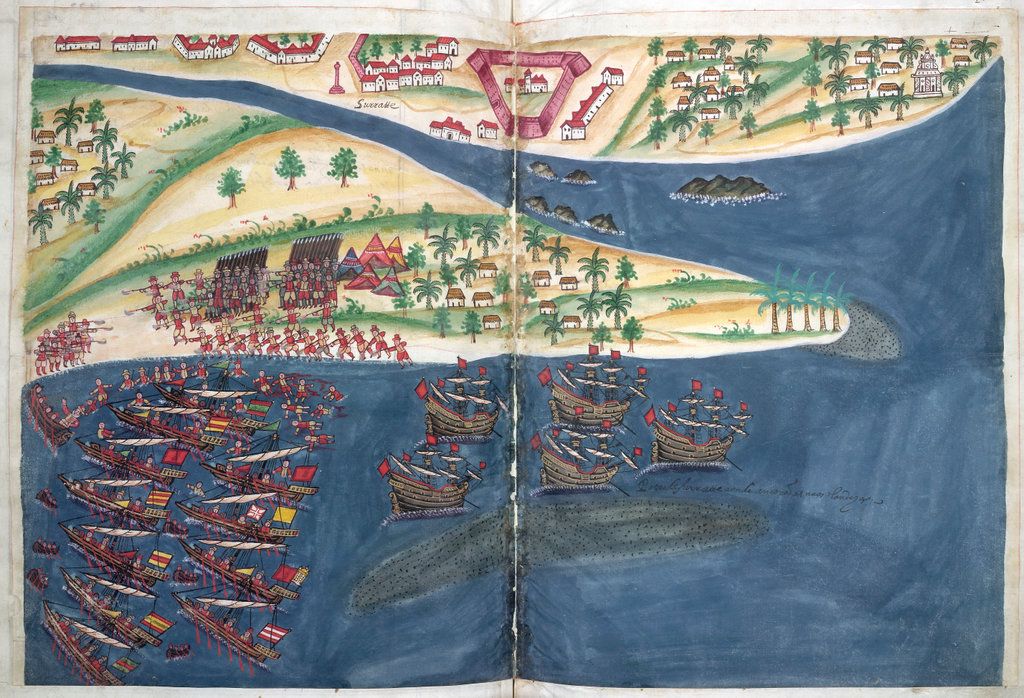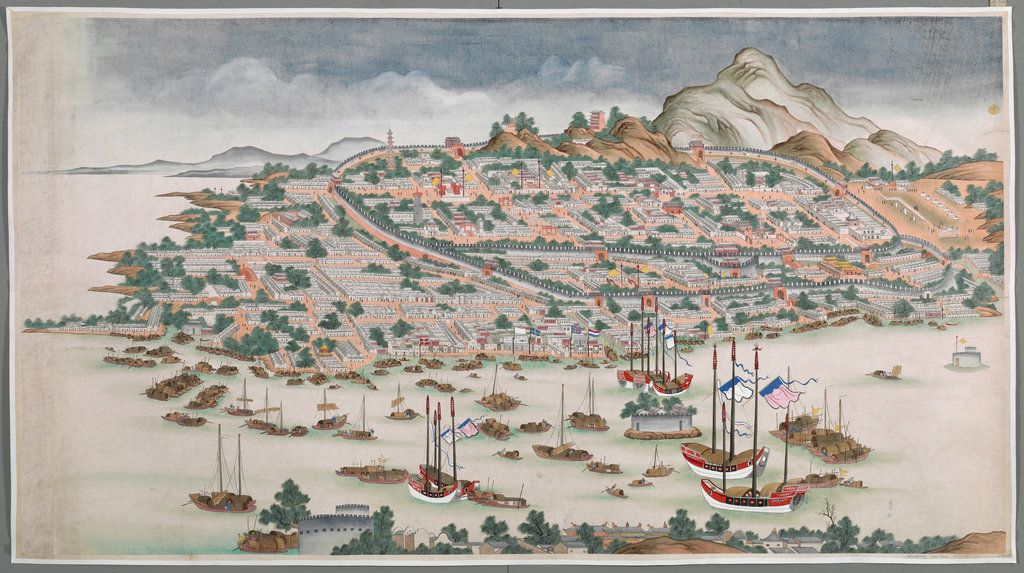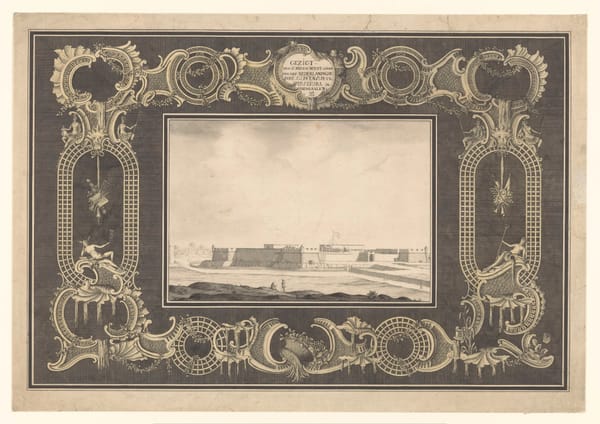What is a Factory?

During the 1780s the ruler of Mysore, Tipu Sultan, commissioned his lieutenants to open up a string of “factories,” or trading posts. These factories were earmarked for construction at several points inside and outside of India (Official Documents, Relative to the Negotiations Carried on by Tippoo Sultaun, 43). In establishing these factories, Tipu Sultan was seeking to replicate an institution that had been central to European capitalist enterprise - though by no means exclusively European - in maritime Asia for three centuries. Part of a broad-based military and economic strategy to expand Mysore’s power, Tipu Sultan’s decision draws attention to several contemporary assumptions about the place of factories in the making of early modern economic and state power in the Indian Ocean region. But what was the early modern trading factory? Was it nothing more than a trading post? Did factories change much in the early modern centuries (1500-1800)? And in a much larger sense, how do factories revise existing histories of regional and global capitalism?

Unexpectedly, histories chronicling the rise of capitalism over the longue durée give short shrift to the early modern trading factory as an institution in its own right. Instead, the early modern factory falls between the narrative cracks of the two institutions frequently said to be responsible for the emergence of capitalism: the joint-stock corporation and the modern industrial factory. In accounts of the latter, little, if any, connection is established between it and its early modern namesake, other than the coincidence of a shared name.
Arguably, a deeper appreciation of the variegated profiles of factories remains embryonic. In the standard framing, early modern trading factories are regarded as nothing more than the appendages of European corporations, part and parcel of their internal machinery and a specific response to the risks of trading in Asia. By contrast, CAPASIA views the factories as a menu of potential institutional configurations rather more than simply a physical trading post.
Nomenclature
The English term factory - and its cognates in other European languages - has its origins in the feitor (factor) of the Portuguese king in Flanders (Subrahmanyam, The Portuguese Empire in Asia, 49-51). With the rise of Portuguese trade with West Africa, the institution of the feitoria was exported to the region in the early 1440s (Sicking, “Funduq, fondaco, feitoria," 204). Over the next half century and more additional feitorias were founded throughout Africa, the Persian Gulf, India, Ceylon, and Malacca. In a persuasive recent account, Louis Sicking has argued that, despite the institutional continuities, these Portuguese feitorias assumed unique characteristics over time. While some resembled the funduqs of the medieval Mediterranean, others anticipated subsequent early modern factories (Sicking, "Medieval Origins.")
Retrospective analogies between the feitoria and the funduq are instructive, as are prospective analogies which assert how the late medieval feitoria foreshadowed factories of early modern vintage. Even so, it is also important to remain mindful of the scale of the factories in comparison with the funduq. Factories were not only numerically greater, but they also managed long-distance, European-Asian trade rather than trans-Mediterranean trade. The view of the factory as a latter-day funduq may also presume too much about how early modern actors thought of these spaces. In fact, early modern European discourses reveal a diversity of categories that do not quite fit what the Anglophone scholarship defines straightforwardly, albeit too simplistically, as the factory. More than half a century ago, Fernand Braudel was quick to recognize the profusion of terminology surrounding European trading institutions in Asia, but in the end he underscored the interchangeability of words like factory and other analogous terms (Fernand Braudel, Civilization and Capitalism, 15th-18th Century, Vol. III, 495).
However, subsequent studies of European commerce in Asia have furnished a more variegated picture of the term’s employment. In the French case, comptoir was the preferred term, especially in the China trade. Yet a British factory in the same context was often described as a hong (Schopp, Sino-French Trade at Canton, 1698-1842, 13, 101). Factorij was used by the Dutch and Austrian East Companies, but other terms were used more often, not least comptoir. Certainly, too much can be made of nomenclature. But a functionalist definition of the factories - one that assumes a rough similarity of norms and practices in spite of differences in name, form, and content - shuts down rather than opens up avenues of research. It is worth underlining that during the early modern period there was something of a semantic shift around the term ‘factory’. Notwithstanding the initial European and African moorings of feitoria, the Indian Ocean gradually became the benchmark for the geographic delimitation of the factories. Thus, by the early eighteenth century, Portuguese dictionaries translated the term feitoria (among other meanings) as a place where European factors reside, with the Dutch, English, and Portuguese factories in Surat given as illustration (“FEITORIA…,” D. Raphael Bluteau ed., Vocabulario portuguez e latino, 68).
Similarly, the Dictionnaire Universel de Commerce from 1723 noted that the factorerie/factorie was a term used almost exclusively in relation to European trade with the East Indies and other parts of Asia (“FACTORERIE, ou FACTORIE…,” Dictionnaire Universel De Commerce, n.p.). Of course, this focus on European languages relays nothing about how the factory as a discursive construct was refracted through Asian languages. In Ottoman Turkish and Persian it was typically called a tijarat-gah, a tijarat-khana, or a kar-khana; in Hindustani a koṭhī. There were also instances of straightforward Asian imitation: Dutch sources of the late seventeenth century likewise make mention of a “royal factory” under the authority of the king of Siam.

Towards Some Typologies
Although it has long been assumed that the Portuguese precedents of the fort and factory (fortaleza e feitoria) provided a “workable model” to their European rivals (K.N. Chaudhuri, Trade and Civilisation in the Indian Ocean, 84), to what extent did the factory remain a monochromatic institution across empires? In the standard framing, early modern trading factories are regarded as nothing more than the appendages of European corporations, part and parcel of their internal machinery and a specific response to the risks of trading in Asia. This flattening out of the factories holds true even in accounts that have tried to account for structural differences between European enterprises in the Indian Ocean. Previous attempts to categorize factories according to ideal types have raised far more questions than they have resolved about the factories as economic institutions.
Writing of the VOC, Holden Furber once maintained that “Every subordinate factory from Mocha to Nagasaki was funneling into Batavia a mass of correspondence which had to be digested by this secretariat. Each factory was a little ‘Batavia’; each had its raad and a corresponding official hierarchy, depending on its size" (Furber, Rival Empires, 191). The designation of ‘mini-Batavias’ suggests that each factory possessed an individual local history worth exploring in detail, even as it remained part of a broader system. It also further clarifies the point that viewing the factories primarily as franchises tethered to corporations headquartered in Europe does little to contextualize them as zones of exchange within Asia.
One way of appreciating this is to divide the factories up into typologies. Typologies clarify, even if simplifications are baked into them. In the endeavor to understand the factories analytically, these typologies perform two functions. First, they take the factories out of a procrustean bed of institutional homogeneity. Second, they allow one to simultaneously catalog the specificities of individual factories without losing site of the broader narrative of regional and global capitalist change. A provisional typology might look like the following:
-The Factory as Fortress (Feitoria-Fortaleza)
Ex: Diu, Malacca, Manar, Hormuz, etc.
-The Factory as Mission Control
Ex: Batavia, Surat, Chinsura, Pulicat, etc.
-The Factory as Interim Lease
Ex: Mocha, Basra, Karikal, Agra, etc.
-The Factory as Failed Venture
Ex: Bantam, Siam, Banquibazar, etc.
-The Factory as Conurbation
Ex: Manila, Madras, Goa, etc.
Work Packages
To capture the factories’ multi-functionality within and across these typologies, CAPASIA examines through four distinct work packages:
Work package 1. Infrastructure
● Concerned with the physical environment and structure of the factories. The designated researcher will draw on a range of sources including prints, maps, and views of factories and local language materials. The database deliverable for this package will be an interactive map with click points for individual factories. Upon clicking, the researcher will find a plethora of images related to that factory.
Work package 2. Procurement
● Covers the process of commodity procurement and production in different factories of the Indian Ocean and examines links among producers, intermediaries, and merchants. One database deliverable from this package will be a ‘Prosopography of Asian Merchants.’
Work package 3. Intra-Asian Trade
● Focuses on the network logic of spatially-dispersed factories through an examination of the trade in specific commodities. Among others, the database deliverable will come in the form of extensive lists of commodities traded between factories. From this, we plan to build up a composite picture of intra-Asian trade.
Work package 4. Information
● Investigates factories as nodes of commercial information exchange (prices, interest rates, metallic monies, contracts, etc.). Although of less direct relevance, also studies factories as spaces for accumulating ethnographic/scientific information. One database deliverable for this will be a much-expanded version of the ‘Mapping Monetary Pluralism’ sub-project (initial details of which can be found in the relevant blog post).
Sources
“FACTORERIE, ou FACTORIE…,” Dictionnaire Universel De Commerce: Contenant Tout Ce Qui Concerne Le Commerce Qui Se Fait Dans Les Quatre Parties Du Monde (Paris: Jacques Estienne, 1723).
“FEITORIA…,” D. Raphael Bluteau ed., Vocabulario portuguez e latino (Coimbra: Real Collegio das Artes da Companhia, 1713),
Official Documents, Relative to the Negotiations Carried on by Tippoo Sultaun, with the French Nation, and Other Foreign States, for Purposes Hostile to the British Nation (Calcutta: Honorable Company Press, 1799).
Fernand Braudel, Fernand Braudel, Civilization and Capitalism, 15th-18th Century, Vol. III (Berkeley: University of California Press, 1992).
K.N. Chaudhuri, Trade and Civilisation in the Indian Ocean: An Economic History from the Rise of Islam to 1750 (Cambridge: Cambridge University Press, 1985).
Holden Furber, Rival Empires of Trade in the Orient, 1600-1800 (Minneapolis, University of Minnesota Press, 1976).
Susan E. Schopp, Sino-French Trade at Canton, 1698-1842 (Hong Kong: Hong Kong University Press, 2020).
L.H.J. Sicking, “Funduq, fondaco, feitoria: the Portuguese contribution to the globalisation of an institution of overseas trade,” Giampiero Nigro ed., Maritime networks as a factor in European integration (Florence: Firenze University Press, 2019).
—. “The Medieval Origin of the Factory or the InstitutionalFoundations of Overseas Trade: Toward a Model for Global Comparison,” Journal of World History, Vol. 31, No. 2 (June 2020), pp. 295-326.
Sanjay Subrahmanyam, The Portuguese Empire in Asia, 1500-1700, Second Edition (Hoboken: Wiley, 2012).









